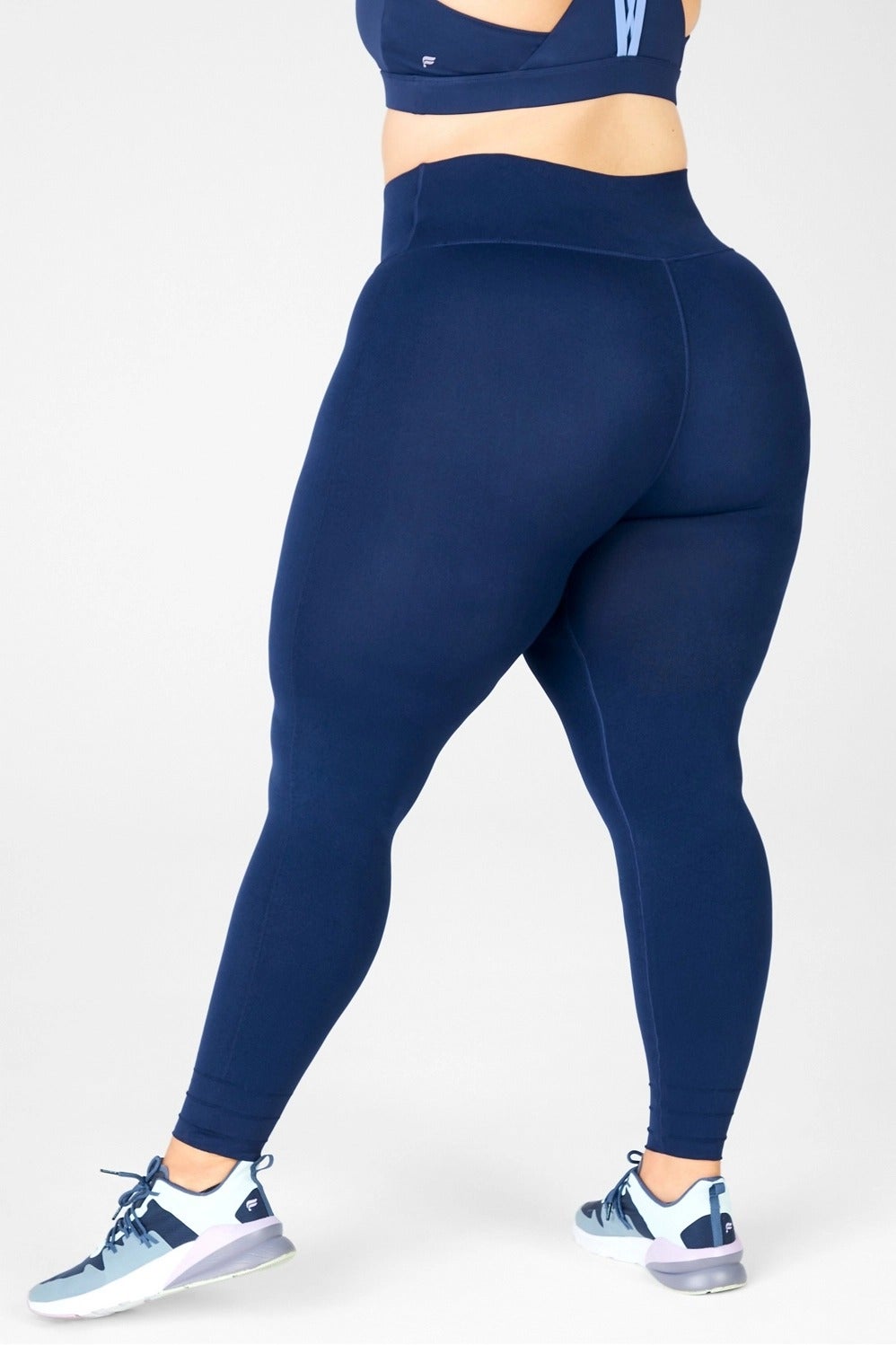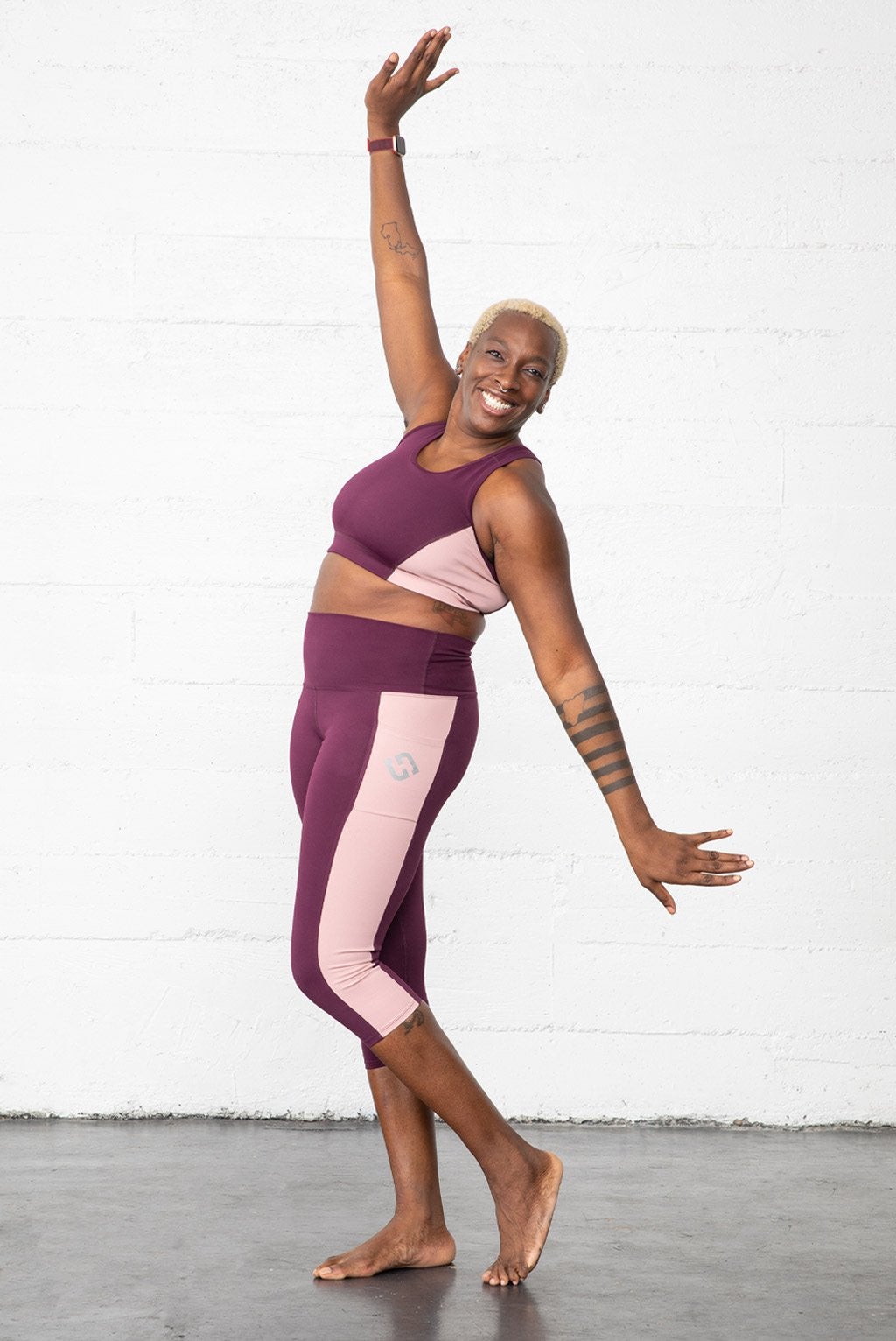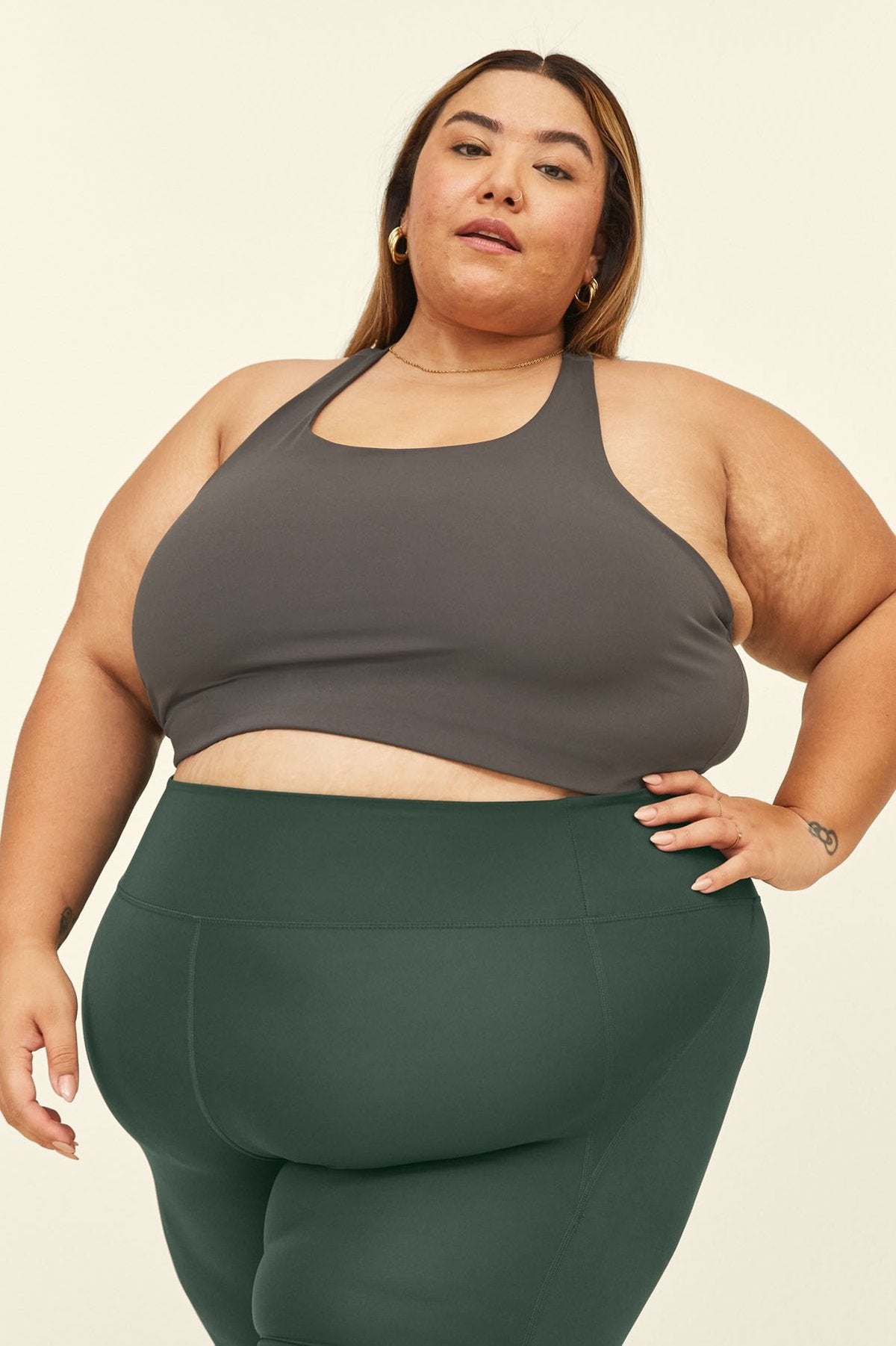The Catch-22 Of Plus Size Activewear
On 1st January, renowned plus-size blogger, advocate and influencer Callie Thorpe shared a photo of herself on the cover of Cosmopolitan. For its February issue, the magazine photographed 11 women of various sizes, abilities and backgrounds in an effort to showcase a simple idea: that neither wellness nor health is one size fits all. Among the cover stars was also Jessamyn Stanley, a beloved plus-size yoga teacher and self-love advocate within the fat-liberation community.
For many of us who exist in figures similar to Thorpe's or Stanley’s, it came as no surprise that these women received relentless criticism in the days following the magazine's publication. Fat people are damned if we do and damned if we don’t. We are regularly told that we should work out, but shamed when we dare exercise in public or online. Health concern trolling — a form of harassment which attempts to justify itself as "concern over a fat person’s health" — feels almost inescapable. Yet when we participate in fitness and wellness practices (like these women did through their cover shoots and accompanying interviews), we are told that fitness and wellness spaces are simply not for us.
AdvertisementADVERTISEMENT
For many years, I struggled to engage with plus-size fitness and athletic-wear content on- or offline. Unlike the average Twitter or Insta troll, my concerns lay not with fat folks themselves but with the fear that participating in such content might perpetuate harmful "good fatty" narratives. Many people of size understandably feel pressured to prove that we are not all the things we are constantly told fat folks are: undisciplined, unfit, ugly, sloppy, unintelligent. Sometimes, appeasing people who’d otherwise shame us simply for existing can take the form of trying to prove our health or fitness status, for example by sharing our workouts and gym ensembles online to show that we’re "healthy" and "fit" and subsequently worthy of respect.
Plus-size model Tess Holliday recently shared similar sentiments on her Instagram. In a video and caption analysing plus-size workout content, she explained: "I am no longer sharing my workouts as proof that I move my body so that it can be used to further perpetuate the toxic way we view and treat larger bodies. No one is more worthy of being loved and accepted just because they work out or have a toned body."
If these recent events within the world of body positivity have proven anything, though, it’s that fat fitness and athletic-wear content which exists beyond the constraints of weight loss narratives has immense value. It should be obvious that people of all sizes are entitled to work out (if they want to), to wear cute, comfortable clothes while doing so and to find movement practices that spark fulfilment. When such a concept still isn’t obvious on a mass scale, however, plus-size athletic-wear imagery can be a tool for the normalisation of fat bodies in motion.
AdvertisementADVERTISEMENT
"It’s very strange that we have to normalise something as simple as allowing people to move their bodies, and allowing people to be involved in fitness," Thorpe tells Refinery29. "But the more we see it, the more hopefully people’s perceptions will change."
Thorpe has certainly felt pressured to prove that she’s "fit" and "healthy", both on and off the internet, but she is figuring out ways of creating content that doesn’t perpetuate this expectation. "It’s been a total journey for me to realise and have an understanding of how ableist it is to suggest that everybody has to be healthy, and that health is some sort of marker for respect when it actually isn’t," she says. "At the end of the day, it doesn’t matter if you’re healthy. Obviously health is a privilege. It really is. I think that for me, my focus going forward has been trying to block that noise out and focus on what wellbeing and wellness mean to me outside of the constraints of diet culture."
Understandably, a lot of fat folks have complicated relationships with fitness. Maybe they want to work out but have horrible experiences of shaming in public fitness spaces. Maybe they don’t want to work out and don’t want to be judged for it (after all, does anyone heckle thin folks who don’t go to the gym?). This is where it’s crucial to support autonomy within fat-liberation communities.
Photo by Aga Lapucha
Actor and body-love blogger Michelle Hopewell explains: "Our collective interconnectedness is both beautiful and a hindrance, because when one person makes a decision for themselves it can often feel as if they have made a decision that holds back the entire community, which isn't always the case."
AdvertisementADVERTISEMENT
"We need to recognise that we must coexist and know that each person is on their journey, each person is making their choices," she adds. "We can only affirm what is right for ourselves and try to encourage one another. If someone makes an overall harmful decision and shares that, should there be responsibility taken? Absolutely! We always need to be sensitive to our audiences and our community, but do we vilify? I really hope we don’t."
Although Hopewell has, like Thorpe and myself, felt pressured in the past to prove she is a "good fatty", she feels confident that she’s at a place in her life in which she works out solely for herself. "I think seeing fat folks in active-wear is a powerful message to send and an affirmation that there isn't one kind of 'correct' body for these types of clothes," she explains. "The part I find tricky when discussing fitness is being mindful for those who follow me and don't exercise. I don't want them to feel invalidated because it's not right for them or not possible for them, but I also don't want to negate that it is a part of my life."
Ultimately, when we remain mindful of the complexities of what workout and athletic-wear content means to other plus-size people, our work arguably stands more of a chance of resonating with greater audiences. As Tasha tells me on Instagram: "I don't like the 'good fatty' narrative being pushed with some of these influencer posts, but I do love to see fat bodies in comfortable, supportive clothes engaging in joyful or challenging movements without apology."
AdvertisementADVERTISEMENT
"There's nothing more comfy than a sports bra, tee, or running jacket and leggings for me, and for much of my fat life, these cute outfits weren't options, so it also feels a little subversive," she adds.
As Tasha suggests, there are arguably more brands out there than ever before which are trying to cater to plus-size consumers. Fabletics (1X-4X), Superfit Hero (US 14-42) and Girlfriend Collective (XL-6XL) are among them. Unfortunately, options remain limited for those who wear larger plus-sizes, which is certainly something that needs to change.
Ultimately, seeing fat people participate in exercise for the joy of it, rather than for attempts at weight loss, can be quite radical. "For me, it’s not just about seeing fat folks [in athletic-wear], but a broad spectrum of bodies, for the purpose of reminding us that exercise is not the exclusive recreation of the thin and the beautiful," says Exeter-based Katie Farmer. "It doesn’t have to be in quest of perfection or fitness but for the joy of movement, which belongs to every body. And of course, anyone choosing to exercise for any reason should have clothing fit for purpose and to fit the body."
Farmer believes that seeing plus-size athletic-wear content feels especially important in this moment in time, "when we’re bombarded with messages about the 'obesity crisis', the impact on the NHS and the likelihood of COVID impacting us more severely."
Katie Wiggins also tells me on Instagram: "Going a step further, when I not only see fat folks in fitness clothing but when I’m taught by fat fitness instructors, I intrinsically feel safer. I know they’ll teach in a more accessible way, and practically speaking I can be like, 'Oh, this [yoga] posture is possible with a belly. I just need to work on flexibility!'"
AdvertisementADVERTISEMENT
When public fitness spaces and mainstream fitness content continue to feel quite exclusionary toward people in larger bodies, there’s no doubt that plus-size athletic-wear content can remind us that these realms are for us if we so please. When created thoughtfully, it can also remind us that health and wellness are indefinable terms which mean different things to different people, and that we are under no obligation to prove that we have attained either.
"I think ultimately, the mainstream wellness space does not feel like a safe space for larger people. Whenever I think of wellness, I think of this version of Goop, and beautiful, small women in yoga Lycra. I don’t feel like I could be included in that, or that anybody in a larger body can," explains Thorpe.
"I think that’s such a shame because focusing on taking care of yourself, nourishing your body, moving your body, getting out and getting fresh air, doing things that provide and add purpose to your life, getting lots of sleep, having well established, beautiful, flourishing relationships, feeling like you’ve got a purpose bigger than yourself — all of these things contribute to a healthy life."
AdvertisementADVERTISEMENT









